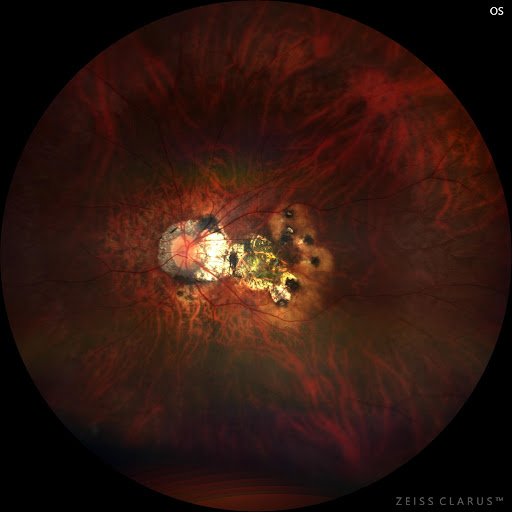Myopia (nearsightedness) is a refractive condition in which the eye does not properly focus the image clearly on the retina. 25% of all Americans are affected by this condition, and it is especially common in Asian population. Patients with myopia can see close objects clearly but not distant objects.
High myopia
Myopia stabilizes at the ages of 20-30 years old. Patients with myopia, especially high myopia, are at risk for the development of retinal tears, lattice degeneration, retinal detachment, myopic degeneration, and myopic tractional retinopathy.
Patients with retinal tears and retinal detachments may experience flashes, floaters, blurry vision, and a progressive “curtain” blocking part of the peripheral or side vision. Please call our office immediately for an examination if you become symptomatic of any of the above visual complaints.
Patients with lattice degeneration, a peripheral retinal degeneration that may predispose you to the development of a retinal tear and detachment, may be visually asymptomatic. A careful evaluation and discussion with our doctors may give you better insight towards the potential benefit of prophylactic laser therapy to reduce your risk of developing a retinal detachment.
Myopic degeneration may occur in patients with severe myopia, and in certain cases, new blood vessels and scar tissue formation called a choroidal new vessel membrane may develop underneath the retina. These abnormal membranes often lead to central vision loss and require treatment with intra-ocular drug therapy to reduce the risk of legal blindness.

Myopic degeneration of the left eye showing peripapillary and macula involving scar and atrophy
Lastly, myopic patients may develop myopic tractional retinopathy, a disease that may require surgical intervention (vitrectomy) to decrease further vision loss. Our doctors will perform complete diagnostic testing and discuss your treatment options.






